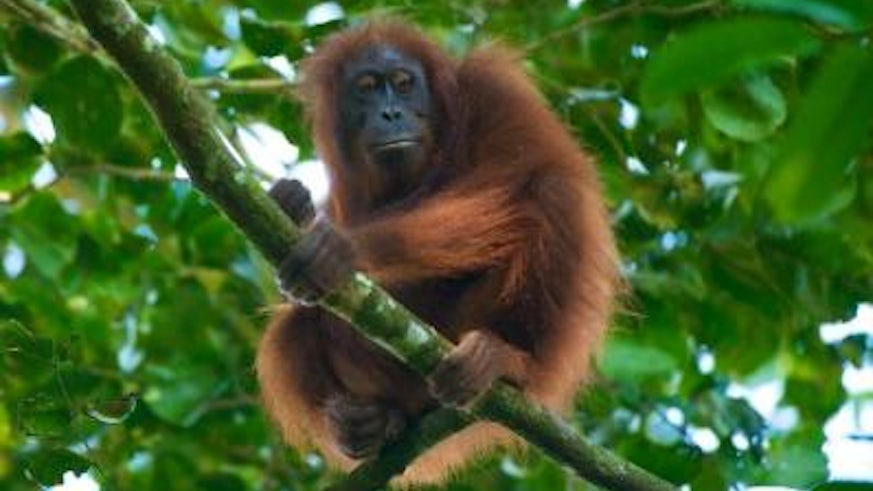Protecting the endangered Orang-Utan
16 September 2014

A pioneering study carried out by researchers from the School of Biosciences has identified new ways to protect Borneo's endangered orang-utans. The research examined opportunities to improve wildlife corridors in a rapidly changing environment.
More than 80% of the orang-utan's habitat has been destroyed over the last 20 years due to agricultural conversion. Orang-utans depend on the forest for food and shelter. Forest fragmentation forms a major threat to their survival. Small, isolated and exposed territories of the forest present increasing threats to the orang-utan population. Those threats are likely to be worsened by environmental changes such as climate change.
Wildlife corridors are used to connect protected territories that are fragmented. This allows the animals to move freely from one territory to another which leads to higher gene diversity and minimises the negative effects of inbreeding. These corridors facilitate the re-establishment and survival of endangered animals. How and where these corridors are established is currently based on past and present environmental research. The new study shows that future habitat suitability projections can improve the efficiency of the corridors in an environment facing climate change and decreasing, fragmented wildlife territories.
Dr Benoit Goossens from the University's School of Biosciences says: "Our results suggest that conservation managers and decision makers should use readily constructed habitat suitability projections to inform conservation decisions, such as habitat corridor placement, so that they are effective in the longer-term.
"The benefit of this research for orang-utan populations is that it instructs a better design and placement of corridors for orang-utan conservation. This will also help other species as climate change affects all species indiscriminately. In this study we used the orang-utan as a model, but the knowledge gleaned will be useful for other mammal species. The next phase of our research will focus on corridor establishment and enhancement by recovering riparian reserves from oil palm plantations, to inform land managers about best corridor scenarios."
The research was funded by the Australian Research Council and supported by Sabah Wildlife Department, WWF Malaysia, the Orang-Utan Conservation Project HUTAN and the Danau Girang Field Centre. The team included Dr Benoît Goossens from Cardiff University, Stephen Gregory, Damien Fordham and Barry Brook from Australia, as well as Marc Ancrenaz, Raymond Alfred and Laurentius Ambu from Sabah.
The full paper can be accessed here: Diversity and Distributions*.
* "Forecasts of habitat suitability improve habitat corridor efficacy in rapidly changing environments" by Stephen D. Gregory, Marc Ancrenaz, Barry W. Brook, Benoit Goossens, Raymond Alfred, Laurentius N. Ambu and Damien A. Fordham, Diversity and Distributions, doi: 10.1111/ddi.12208